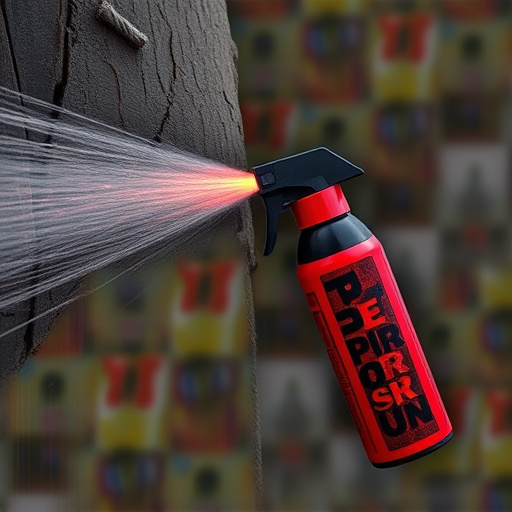Regularly checking pepper spray's expiration date (MM/DD/YYYY) ensures its potency as a self-defense tool. Store it cool, dry, and sealed away from extreme temps. Combine with martial arts or personal alarms for comprehensive safety. Replace before 2-3 year expiration to maintain effectiveness.
“Staying prepared is key to personal safety, especially in potentially dangerous situations. This comprehensive guide delves into the world of pepper spray as a deterrent, offering insights on its active ingredients, expiration dates, and optimal storage. Learn how to check crucial expiration details with our easy-to-follow steps. Additionally, discover complementary self-defense strategies and alternatives to ensure you’re fully equipped. Maximize your preparation by understanding these essential aspects of pepper spray defense.”
- Understanding Pepper Spray's Active Ingredients
- How to Check and Interpret Expiration Dates
- Effective Storage Practices for Longevity
- Alternatives and Complementary Self-Defense Strategies
Understanding Pepper Spray's Active Ingredients
Pepper spray, a popular self-defense tool, is designed to incapacitate an attacker temporarily through a potent mixture of capsaicin, oleoresin capsicum (OC), and other active ingredients. These chemicals stimulate nerve endings in the eyes, nose, and respiratory system, causing intense irritation and discomfort. Understanding these ingredients is key to recognizing their effectiveness as a deterrent.
When purchasing pepper spray, it’s crucial to check the expiration date, as the potency of capsaicin degrades over time. Regular maintenance and proper storage are essential to ensure the product remains potent when needed. This simple step can make all the difference in real-life scenarios, providing users with peace of mind and an extra layer of protection.
How to Check and Interpret Expiration Dates
Checking the expiration date on your pepper spray is a crucial step in ensuring its effectiveness as a defense mechanism. Most pepper sprays come with a clearly marked date, usually printed on the side or back of the container. This date indicates when the spray’s potency and quality are guaranteed to remain at their peak. It’s essential to understand that once this date passes, the spray might not perform optimally during an emergency.
To interpret the expiration date, look for a format similar to “MM/DD/YYYY.” Ensure the date is within the valid range for your pepper spray product. If it has expired, don’t panic; instead, consider purchasing a new can. Regularly checking and replacing your pepper spray is a smart practice, as it guarantees you have a reliable self-defense tool ready when needed.
Effective Storage Practices for Longevity
Proper storage practices are paramount to ensuring the longevity and effectiveness of pepper spray, a crucial defense mechanism for personal safety. To maintain its potency, store pepper spray in a cool, dry place away from direct sunlight. Extreme temperatures can degrade the active ingredients, so avoid leaving it in a hot car or exposing it to freezing conditions. Additionally, keep the container sealed to prevent moisture absorption, which could compromise its performance.
Regularly checking the pepper spray’s expiration date is an essential part of these storage practices. Unlike some other self-defense tools, pepper spray has a limited shelf life, typically ranging from 2 to 5 years. After this period, its effectiveness decreases significantly. Therefore, it’s vital to inspect the product for any signs of degradation and replace it if necessary. This simple step can make a substantial difference in its reliability when you need it most.
Alternatives and Complementary Self-Defense Strategies
While pepper spray is a popular and effective deterrent, it’s not the only self-defense strategy available. Combining pepper spray with other techniques can create a multi-layered defense system that significantly increases personal safety. For instance, learning basic martial arts or self-defense moves can provide physical alternatives to spray, enabling you to disable an attacker without relying on the spray’s immediate effects. Additionally, carrying a personal alarm device acts as a visual deterrent and can disrupt assaults before they escalate.
Regularly checking pepper spray expiration dates is crucial, much like any other medication or safety gear. Pepper spray has a limited shelf life, typically ranging from 2 to 3 years, depending on the brand and storage conditions. Using expired spray could diminish its effectiveness during an emergency situation. Therefore, users should stay vigilant, dispose of old sprays responsibly, and replace them before their expiration date to ensure optimal protection.
When it comes to self-defense, a pepper spray deterrent is a valuable tool. By understanding its active ingredients, checking and interpreting expiration dates regularly, storing it properly, and exploring complementary strategies, you can ensure its effectiveness and longevity. Remember, staying informed and prepared is key to navigating potential threats with confidence.
